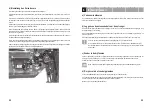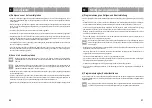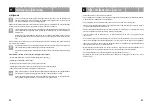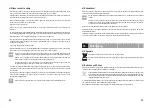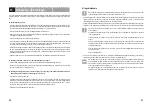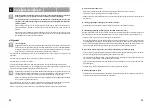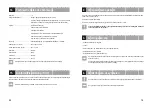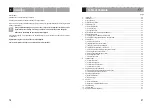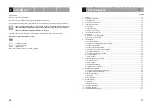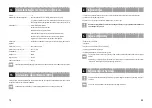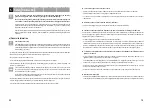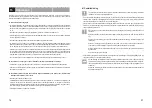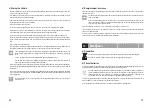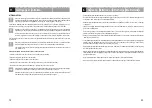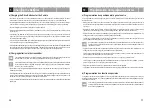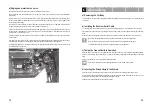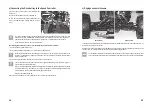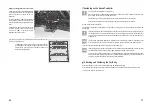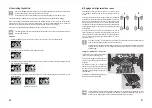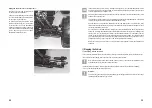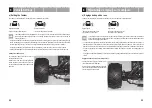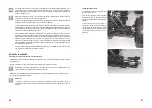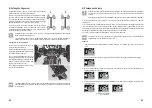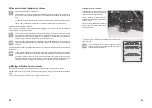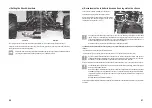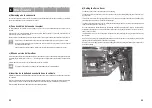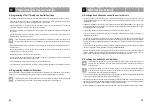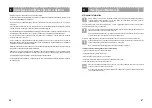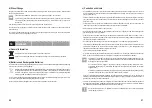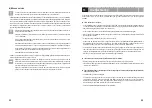
34
7. Charging the Batteries
a) Charging the Drive Batteries for the Vehicle
• The vehicle requires either one 4-cell LiPo batteries or two 2-cell LiPo batteries of the same build (see “Technical
Data” at the end of these instructions). Use the included Y-adapter if you are using two 2-cell LiPo batteries.
• No rechargeable drive battery is included in the delivery. It must be ordered separately. You can chose whether you
want to use low-cost battery packs for beginners or high-quality professional battery packs with a high capacity.
• The drive batteries are delivered uncharged and must be charged.
• Before the rechargeable drive battery delivers its maximum power, several complete discharge and charge cycles
are necessary.
• High-quality drive batteries not only have a higher capacity, which allows you to drive your model vehicle much
longer, but also deliver a higher output voltage under load. This gives the motor more power and results in better
acceleration and higher speed.
• If you are using several drive batteries or rechargeable batteries, purchasing a high-quality charger may be worthwhile.
Such a charger usually has a quick-charging feature.
• Rechargeable batteries heat up when charged or discharged (driving the vehicle). Wait until the rechargeable batteries
have reached room temperature before charging them. The same applies after the charging procedure. Do not use
the rechargeable battery in the vehicle until it has cooled down completely after the charge process.
b) Charging batteries in the transmitter
The included transmitter may not have a charging socket; observe the included operating instructions for
the transmitter. In this case, remove the inserted batteries and charge them externally.
If your transmitter has a charging socket, check whether there are actually rechargeable batteries inserted
in the transmitter before connecting the charger. When charging normal (non-rechargeable) batteries,
there is a risk of fire and explosion!
• We recommend not charging rechargeable batteries directly in the transmitter but with a high-quality charger for
individual cells instead.
• Rechargeable batteries in the transmitter must not be quick-charged as this damages the transmitter and heats up
the cells in the transmitter excessively. Observe the maximum permissible charging current as indicated on the
transmitter or in the operating instructions of the remote control system.
• Only use a charger designed for the respective number of cells in the transmitter and the corresponding rechargeable
battery type.
71
10. Programmation du régulateur de vitesse
a) Programmation des positions plein gaz et neutre
Pour programmer la position plein gaz pour la marche avant / marche arrière et la position neutre, procédez de la
manière suivante :
• Allumez l’émetteur, laissez le levier d’accélération / de freinage en position neutre. Réglez la compensation de la
fonction de conduite en position médiane. Positionnez l’interrupteur d’inversion de la fonction de conduite en position
« Reverse ».
• Maintenez la touche Setup enfoncée et allumez le régulateur de vitesse. Maintenez la touche Setup enfoncée
(pendant env. 4 secondes) jusqu’à ce que la DEL orange s’allume. Relâchez ensuite la touche Setup.
• Déplacez le levier d’accélération / de freinage en position plein gaz pour la marche avant (levier d’accélération / de
freinage tiré à fond vers la poignée) et maintenez-le dans cette position.
La DEL rouge clignote pendant 2 à 3 secondes puis reste allumée en continu. Le moteur émet un signal sonore. La
position plein gaz est enregistrée pour la marche avant.
Ce signal sonore est généré par une activation brève du moteur Brushless. En fonction du type de moteur,
ce signal sonore est cependant très silencieux, voire inaudible. Observez alors l’affichage des DEL sur le
régulateur de vitesse.
• Déplacez le levier d’accélération / de freinage en position plein gaz pour la marche arrière (levier d’accélération / de
freinage poussé à fond de la poignée) et maintenez-le dans cette position.
La DEL orange clignote pendant 2 à 3 secondes puis reste allumée en continu, le moteur émet deux tonalités. La
position plein gaz est enregistrée pour la marche arrière.
• Relâchez le levier d’accélération / de freinage de manière à ce qu’il se trouve en position neutre.
La DEL rouge et le DEL orange clignotent simultanément pendant 2 à 3 secondes avant de s’éteindre. Le moteur
émet trois signaux sonores. La position neutre est sauvegardée.
• Éteignez le régulateur de vitesse, la programmation est terminée et sauvegardée.
• Le régulateur de vitesse est maintenant opérationnel avec les réglages définis dès que vous le mettez en marche.
b) Programmation des fonctions spéciales
Le régulateur de vitesse est préprogrammé avec les réglages idéaux du fabricant pour le véhicule (par ex. timing du
moteur, mode de démarrage, etc.). Cette programmation peut être modifiée à l’aide d’une carte programmable dispo-
nible comme accessoire.
La carte de programmation ne fait pas partie du contenu de la livraison et doit être commandée séparément.
Toutes les fonctions spéciales ainsi que leur programmation respective sont décrites dans le mode d’emploi
de la carte de programmation.

